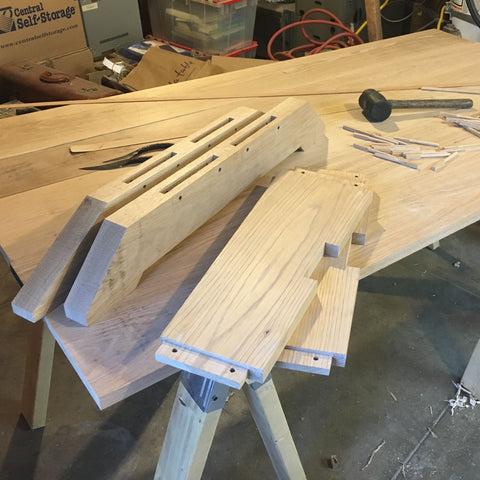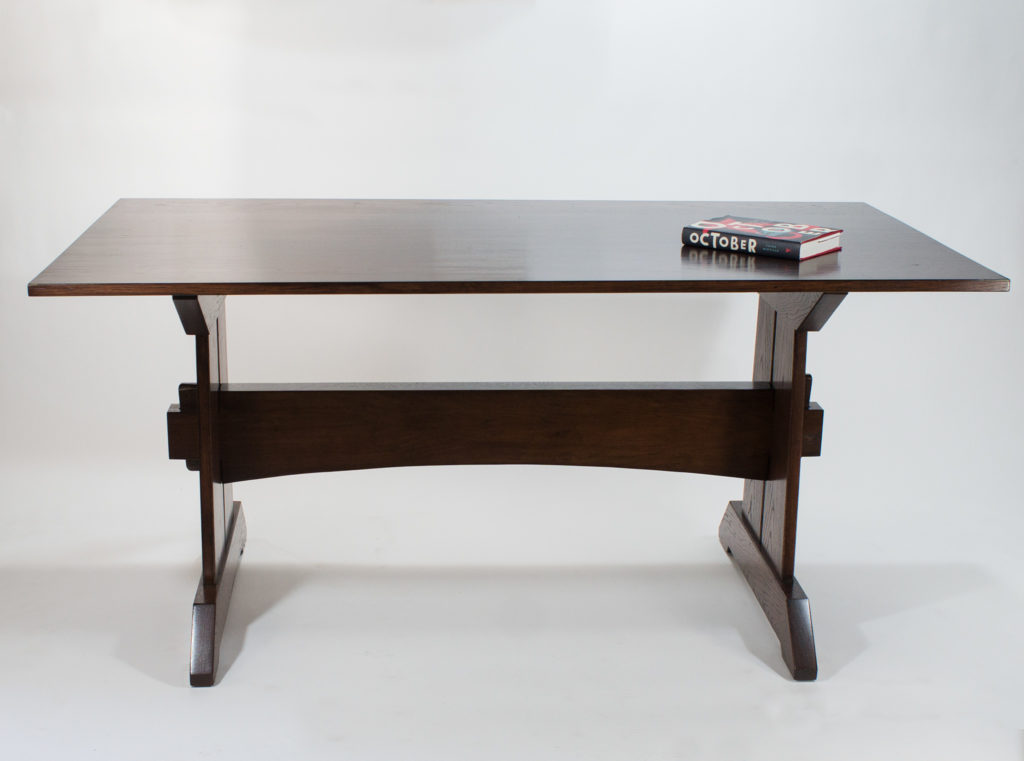
Trestle Tables have a long history – they’re likely one of the first table designs ever. I’ve always wanted to put my own spin on it, and I ended up spending a lot of time sketching ideas on this one. I’m really happy with the final result, featuring split, tapering trestles and a graceful arc to the rail that connects them.

I wanted a classic, old-English dark & heavy feel to the piece, so oak was definitely called for. The wood for the top was also beefier than usual to help achieve that sturdy look. I started by milling the boards to their basic sizes and cut the mortise and tenon joints that would hold the trestles together.


The trestles themselves were assembled using a technique called drawboring, where wooden pegs are forced through slightly offset holes to create an extremely strong joint. I had read about antiques made this way that are still strong after hundreds of years. After some experiments I decided that glue was not needed at all, as the drawbore pegs provide ample strength that will most likely outlast any glue available.


The two trestles are joined by the rail, which locks into place with a tusked mortise and tenon design, where a sturdy wedge-shaped peg is dropped through the end of the tenon. In this case, the two parallel parts of each trestle provide extra tension beyond what the peg would do on it’s own.


Assembling or disassembling the table is as easy as knocking the tusks in or out with a mallet, which allows you to remove the rail.

To get the old-English oak look I applied a coat of a deep-toned “java” stain, followed by a few coats of an oil/polyurethane blend which revealed the grain beautifully.


The final result is a table which will outlast us all, with simple, elegant proportions.
